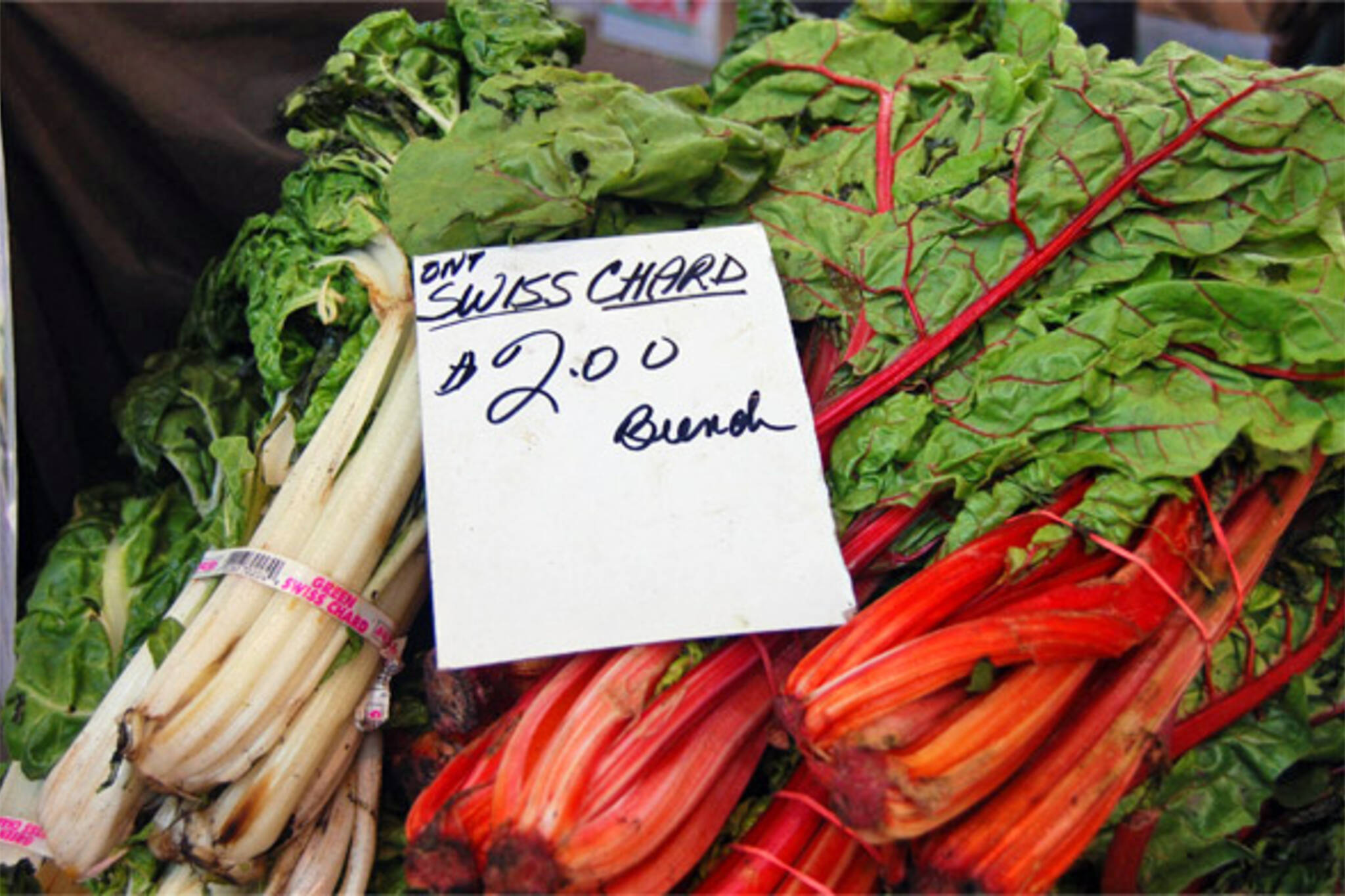
What's Fresh, Toronto? Swiss Chard!
Swiss chard - it's not quite celery; it's not quite spinach. But it is quite delicious and one of those summer gems that gets totally underrated at farmers' markets or in grocery stores. Good old Ontario chard has been available since mid-June, and so while it's not altogether "fresh" on the harvest scene, it will be available into November and is a great veggie that flies under the radar.
Like most foods for most people, it was my mom that introduced me to Swiss chard. When I was about 5 she used to grow it in our garden in Calgary. She, like her mom, would use it in soups or as a side dish. Tasting like a milder and earthier version of spinach, I somehow developed a liking for chard as a kid and it has been making a come back in markets, gardens and restaurants across the city over the last few years.
Swiss chard (or just chard) is part of the beet family, but it produces large leaves and fleshy stalks rather than a bulbous root. Chard picked up the "Swiss" in its name in the 19th century to distinguish it from cardoon in seed catalogues, but it's not clear why "Swiss" was used. Its origins have been traced back to the famous hanging gardens of ancient Babylonia, where it eventually spread from the Middle East to Western Europe. Today it is still widely popular in Greek, Spanish, French and Italian cuisine.
The stalks of chard can come in a variety of colours, from white to pink to orange to yellow, and the brighter coloured stalks are sweeter tasting than their white counterparts. The leaves are large and dark green.
So what to do with these stalky big boys when you get them home? Depending on the maturity of the plant, the stalks and leaves might be tender enough to wash, chop and enjoy is salads. But Swiss chard is most often cooked before it is eaten.
My favourite use for chard is in soups, so I braise the stalks and leaves together in some vegetable stock, chop it up and freeze it for hearty fall/winter soups with penne, white beans and onion. For some Spanish influence, you can braise it and serve it with caramelized onions and pine nuts as a side dish or serve it atop some polenta as a main.
It's also delicious in risotto; just chop it down, braise it and mix it in near the end. Same goes for pasta, Swiss chard and parmesan are a great flavour combination. You can treat it a la rapini and just simply sautee with olive oil, garlic and chili flakes (but be sure to cook the stems and leaves separately, the leaves only need to be added in at the end until wilted).
If you're not familiar with Swiss chard, take this season as an opportunity to get to know it's earthy pleasure a little better.
As the growing season continues, I'll be keeping track of what is becoming available each step of the way, and will share my findings in this here farm fresh feature "What's Fresh, Toronto?" Stay tuned for future installments.
What's Been Fresh, Toronto:
Ramps
Fiddleheads
Asparagus
Rhubarb
Radishes
Strawberries
Cherries
Raspberries
Summer Squash
Peaches
Tomatoes
Corn
Latest Videos
Latest Videos
Join the conversation Load comments







